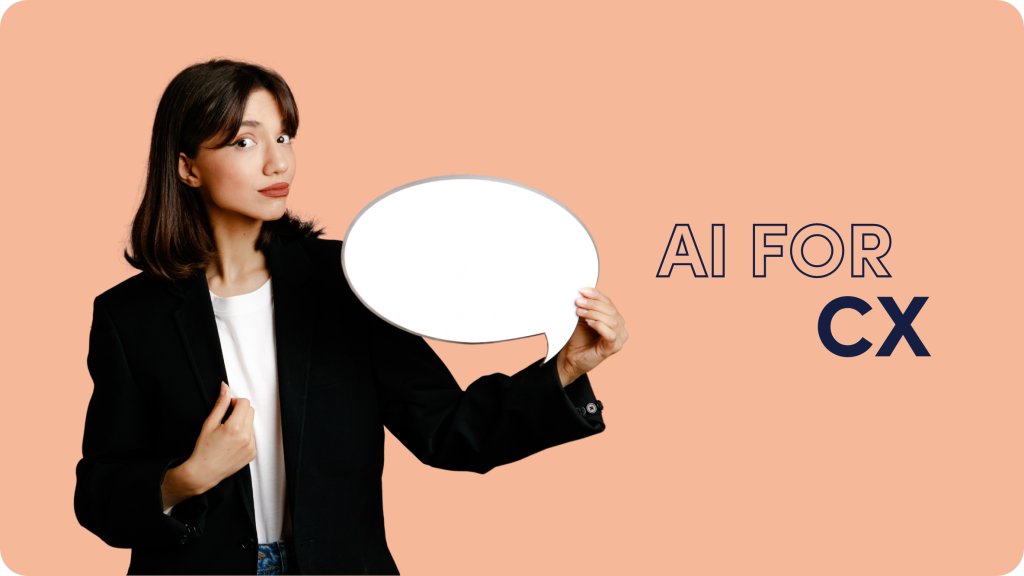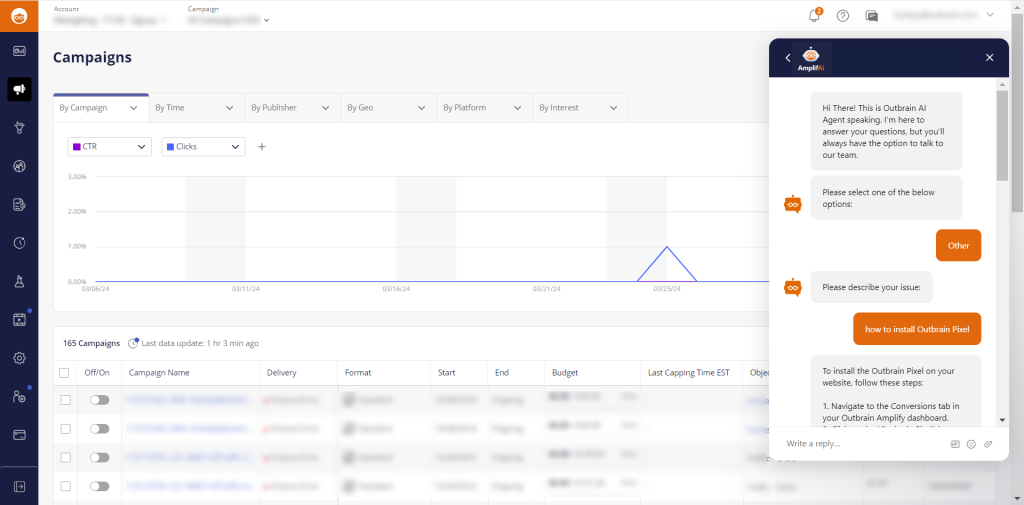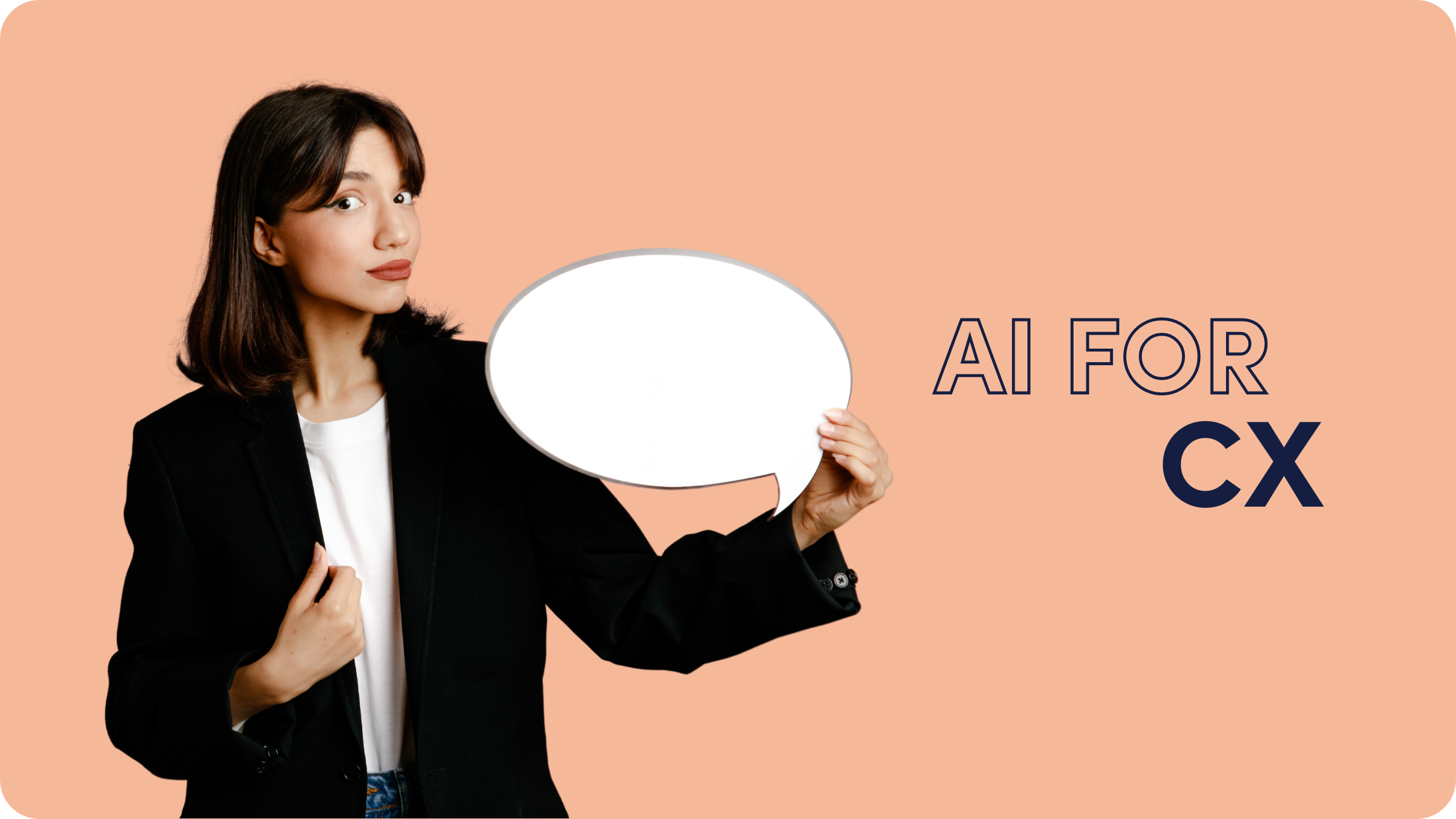AI Chatbots: How and Why They Work (and Introducing AmplifAI by Outbrain)

Gartner predicts at least 25% of companies will use chatbots as their primary customer support channel by 2027.
The catalyst?
AI.
AI has revolutionized chatbots in recent years.
Breakthroughs in Large Language Models (LLMs), such as GPT-4, have given chatbots conversational “superpowers”.
These days, when you click the online chatbot in the bottom right corner, rather than a generic set of questions and answers, you get to have a human-like conversation with the AI chatbot.
The conversation flows as the AI agent asks you clarifying questions, understands the context of your replies, and directs you to the correct solution, much like a human would.
That’s the power of modern conversational AI chatbots online – they do much more than just trot out a pre-written script.
Instead, they’re listening, adapting, and making each interaction more personal.
Of course, this makes your customer service more efficient. Customers no longer have to wait around for a human agent, with many simple issues resolved after a quick chat with the AI chatbot.
For more complex problems that need further assistance, the AI chatbot passes the customer on to a human agent, while providing context at the same time.
In other words, the whole process is streamlined.
In this guide, we’ll take a deeper look at how AI chatbots work, the key benefits, and the best practices for adding them to your customer service workflows.
What are AI Chatbots?
AI chatbots are automated ‘assistants’ that enable customers or users to interact with a business online without the need for human involvement. Chatbots use artificial intelligence to predict the user’s question or problem and provide a customized answer or solution. AI chatbots can be built and deployed in many different ways, depending on the business goal and customer needs. For example, a customer service chatbot can provide automated assistance during checkout at an online store. For SaaS software products, like Outbrain, an AI chatbot ‘lives’ inside the dashboard, providing a chat-based help function for customers while they use the product.
Types of chatbots
There are two main types of online chatbot:
- Rule-based chatbots: These are traditional chatbots that use predefined rules or scripts. They guide customers through a series of “if-then” scenarios, directing people to answers and solutions based on specific keywords or choices. They are good for straightforward tasks, but not so good for more complex queries.
- AI-powered chatbots: Using technologies such as Machine Learning (ML) and Natural Language Processing (NLP), AI chatbots can understand customer requests and queries on a deeper level. They offer personalized support and improve over time by learning from each interaction.
How do Chatbots Work?
AI chatbots use NLP technology in the form of LLMs to “talk” to a customer, rather than just acting as a search engine.
Customers ask questions and the AI chatbot uses NLP to understand context. If needed, the chatbot asks further clarifying questions before providing responses that are in its knowledge base to address the customer’s needs exactly.
Let’s look at an example of an AI chatbot in action.
Online retail AI chatbot example
Emily browses her favorite online clothing store, looking for a dress for an upcoming event. She finds one she likes, but is unsure about the sizing. She notices the “Chat with us” button in the bottom right corner of the page and decides to ask for help.
Step 1: Initial query
Emily types, “I’m interested in the Floral Maxi Dress but unsure about the sizing. Can you help?”
What happens: The AI chatbot processes Emily’s query. Unlike basic chatbots, it doesn’t just look for keywords like “sizing” but understands that Emily needs help with the size of a specific type of dress.
Step 2: Clarifying questions
The chatbot responds, “Of course! To help you more, could you tell me your usual size and how you prefer the dress to fit?”
What happens: Here, the chatbot is doing two things. Firstly, it acknowledges Emily’s request, making the interaction feel more personal. Next, it asks a follow-up question to get some details – Emily’s usual size and her fit preference. This step shows the chatbot’s ability to narrow down the customer’s needs.
Step 3: Offering solutions
After Emily provides her usual size and fit preference, the chatbot says,””Based on your preferences, I recommend size M for a comfortable fit. Would you like to see how it looks on models of different sizes?”
What happens: The chatbot uses the information provided to suggest the best size. It then goes a step further, offering a visual aid that shows an understanding of typical customer concerns.
Step 4: Further assistance or closure
Emily is happy with the suggestion and asks how to add the dress to her cart. The chatbot provides a direct link to the product page with the size pre-selected.
What happens: The final step solves Emily’s problem within the chat interface. The chatbot has not only helped her decide on the size but has also made it easier for Emily to buy the right dress for her.
How do AI Chatbots Improve Customer Experience?
Customer experience (or CX for short) is the overall impression a brand creates across the entire customer journey. It includes things like the quality of customer care, advertising, packaging, product and service features, ease of use, and reliability.
CX is something that brands spend a lot of time and money getting right. There’s a good reason for that, with research showing that around 50% of customers will swap to another brand if CX is poor.
Online customer support is a big part of CX. Your chatbot needs to be good if you want to make a positive first impression. AI chatbots can help boost CX in the following ways:
- Personalization: AI chatbots do more than just respond to a customer with stock answers. They tailor the response and remember things previously said, adapting their responses to suit.
- Instant support: Rather than waiting around for a human agent, customers can get the real-time support they’re looking for.
- Faster resolution: The AI chatbot is trained to ask questions that quickly narrow down and diagnose the problem and present a relevant solution.
- 24/7 availability: AI chatbots are ready and waiting 24/7 to serve customers and solve their problems.
- Omnichannel communication: AI chatbots can be everywhere the customer is – website, social media platform, inside a software product, or messaging app – ready to continue the dialogue with knowledge of past interactions, connecting every step of the journey.
- Reduced wait times: The last thing you want to do is frustrate your customers. AI chatbots reduce bottlenecks by handling unlimited queries at the same time and only handing off to a human agent when needed.
Benefits of Chatbots for Businesses
The most obvious benefit of AI chatbots for businesses is cost saving. Research suggests that AI chatbots can shave an average of $0.70 off every customer interaction. This could lead to billions of dollars being saved by businesses, freeing up time for customer service agents to spend on developing more personalized relationships with customers and helping with complex issues.
As well as cutting costs, there are some other key benefits of AI chatbots for businesses, including:
- Scalability: Instead of needing a small army of human customer service agents to handle customer queries, a single chatbot is there night and day to help millions of people at once. AI chatbots exist in the cloud, which means you can scale up resources on demand. So, when your chatbot needs to handle more conversations, say, during a big sale or product launch, all you need to do is move up to a tier that allows for more customer interactions. Some AI chatbot services offer “pay as you go” pricing.
- Data insights: AI chatbots can gather data and generate insights into common customer queries and complaints. This allows you to track customer sentiment and identify areas for improvement.
- Integration and automated workflows: AI chatbots can integrate with various business systems – inventory management, order processing, CRM, you name it. This allows them to pull in information from different sources for better responses and carry out certain tasks automatically.
- Improved conversion rates: AI chatbots can do more than just answer questions. They can also recommend products that fit the customer’s specific needs and even offer discounts or special deals to sweeten the interaction.
Best Practices for Implementing AI Chatbots
To help you implement AI chatbots into your online presence smoothly, we’ve identified eight key steps that will help you get the best possible results.
1. Set clear goals
Before designing and deploying your chatbot, outline what you want it to achieve. Support cost reduction? Lead generation? Improved customer satisfaction? Clear objectives guide your decisions. For a first implementation, it makes sense to keep things simple and focus on tasks that AI chatbots handle well, such as basic queries, before extending to more complex tasks.
2. Define your chatbot’s personality
Your chatbot is an extension of your brand. Do you want it to be friendly and informal? Professional and straight-to-the-point? Make sure that the way your chatbot is trained and the prompts behind it result in a style that is “on-brand”.
3. Choose the right channels
Where do your customers go to request support? For most brands, this will mean deploying your chatbot on their website. Some brands might have their own app and it could be built into that too.
4. Train, test, and refine
Invest time in training your chatbot with complete data sets. Regularly test the bot’s responses and iteratively improve it. The main thing is to ensure that it understands common questions and consistently provides accurate answers.
5. Emphasize transparency
Clearly indicate that users are interacting with a chatbot. This manages expectations, avoids frustration, and builds trust.
6. Personalize where possible
When it is applicable, you can get the chatbot to remember customer preferences and previous interactions for a more tailored experience.
7. Provide a human option
Even the best chatbots are unable to handle all queries and complaints. Ensure a smooth handover mechanism to live agents for complex queries or when a customer insists on speaking with a human.
8. Gather feedback and analyze
Use chatbot analytics tools to monitor results, collect user feedback, identify areas for improvement, and refine performance over time.
AmplifAI: Outbrain’s Dashboard AI Chatbot at Your Service
AmplifAI is Outbrain’s AI chatbot assistant, available inside the self-service dashboard for Outbrain advertisers.
AmplifAI is ‘switched on’ 24/7 to provide answers to your questions about how to use the Outbrain dashboard and its features. AmplifAI is programmed to cover all kinds of topics, including product information, customer service queries, or anything you want to know about Outbrain in general.
The chatbot is located at the top right corner of your dashboard. Click on the “Talk to Us” icon and start typing. AmplifAI is fast and easy to use and will handle your questions instantly. If intervention by a human Outbrainer is required, AmplifAI will take care of it too.
Log in to your dashboard to see it in action.

Keep Up with the AI Customer Service Revolution
AI is shaking up the whole of the digital world right now and customer service is no exception.
AI chatbots transform the way initial support is given to customers, helping them to get solutions to their problems more quickly and at any time of the day. Businesses benefit from reduced costs and high scalability.
The future of customer service is conversational AI, and businesses that adapt and adopt early will gain a competitive edge.
When you are inside the Outbrain dashboard creating your native campaigns, be sure to give AmplifAI a try when you need some extra assistance. It’s ready and waiting to help you maximize your digital advertising results!


